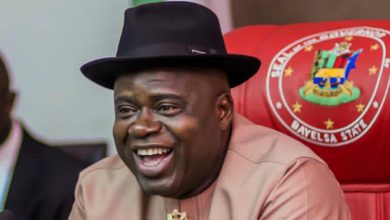HSBC Pulls Itself Out From Loss-Making US Retail Banking

In May 2021, HSBC announced its exit from the US retail banking business. This strategic move will include:
- Exit from 90 out of 148 branches. Gradually it will also wind down the remaining 40-50 branches.
- Exiting all the retail banking customers.
- Exit from Advance, Personal, and some Premier customers.
In a statement issued by the company, Noel Quinn, Group Chief Executive of HSBC, said:
“We are pleased to announce the sale of the domestic mass market of our US retail banking business. They are good businesses, but we lacked the scale to compete. Our continued presence in the US is key to our international network and an important contributor to our growth plans. This next chapter of HSBC’s presence in the US will see the team focus on our competitive strengths, connecting our global wholesale and wealth management clients to other markets around the world.”
Consequently, HSBC bank will target the banking and wealth management requirements of high net worth clients. It will exit all its mass-market banking business through various divestitures. However, it will continue with a small network of physical locations in the current and existing markets. These 20-25 locations will be remodeled into international wealth centers. These will be in cities such as Washington D.C., New York, Seattle, San Francisco, Miami, and Los Angeles.
Is it a sudden move?
In the 1980s, HSBC started expanding into US retail banking to diversify its geographical realms. However, the ace banking institution was now looking to downsize in some North American and European markets where it was facing stiff competition from the domestic players. HSBC had dropped hints as early as February 2021 that it had started looking for strategic alternatives – both organic and inorganic to better its US retail business profitability.
Why?
As per the bank’s annual reports, HSBC lost $549 in its US wealth & personal banking business in 2020. Investment banking and large corporate businesses earned a total profit of $573 million in the United States in 2020. However, Asia proved to be its most profitable market making a $5 billion profit in Asia, mainly from Hong Kong.
Michael Roberts is President, CEO and Executive Director of HSBC North America Holdings Inc said:
“Today’s announcement is an important step towards becoming a more focused, simpler and sustainably profitable organization. A strong, internationally connected US business is an important part of HSBC’s value proposition, and we are excited to be focusing the US business in areas of competitive strength. At the same time, I am very pleased that we were able to execute this strategic repositioning at pace. It was also important for us to find buyers who would be a good fit for our customers and employees.”
Here are the details on divestiture:
HSBC will retain approximately 30,000 customers, significantly down from 1.4 million customers. The bank will no longer serve ventures with a turnover of $5 million or less or customers with a balance below $75,000. It will retain U.S. clients with Jade accounts containing at least $1 million in cash.
HSBC has entered into an agreement for selling the west coast business to Cathay Bank and the East coast business to Citizens Bank. It will transfer the customers to these two banks, and the process is expected to complete by the first quarter of 2022. HSBC will continue its services until then.
Cathay Bank will take over the West Coast domestic mass market as well as the retail business banking businesses. It includes ten branches and nearly 50,000 customer relationships with US$ 0.8bn of outstanding loans and US$1.0bn in deposits, and US$ 0.8bn as of 31 March 2021.
The Citizens Bank will own the East Coast domestic mass-market, retail business banking businesses, and the online bank portfolio, with 80 branches and an average of 800,000 customer relationships with US$2.2bn of outstanding loans and c. US$9.2bn in deposits as of 31 March 2021.
HSBC will also transfer the accounts of the customers living overseas except those who have sufficient money to fulfill the new minimum balance requirements. These sales agreements are subject to regulatory approval. The bank expects to incur US$100 million of pre-tax costs with the transactions.




